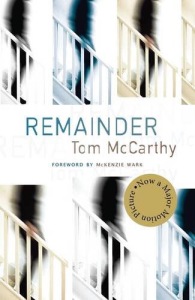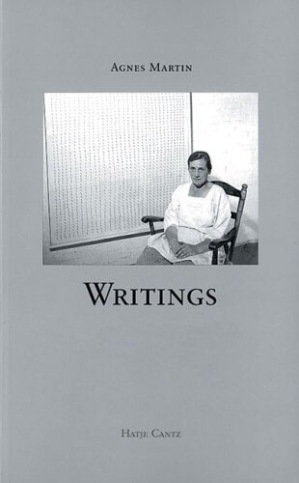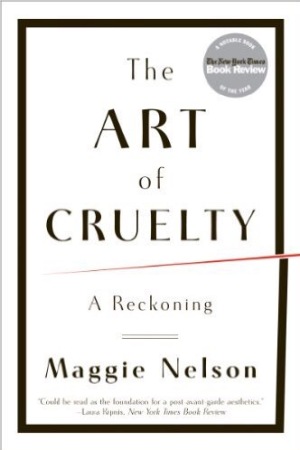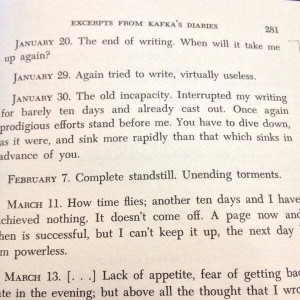 “I’m currently reading this, which is a book of short stories- cosmicomics- by Italo Calvino. The way he writes set my imagination off; his descriptions and details built up crazy images in my head and I like the short story format a lot – it suits my way of working and my short attention span so he is perfect for the studio as I dart between painting, drawing writing and reading” –Molly Rose Butt
“I’m currently reading this, which is a book of short stories- cosmicomics- by Italo Calvino. The way he writes set my imagination off; his descriptions and details built up crazy images in my head and I like the short story format a lot – it suits my way of working and my short attention span so he is perfect for the studio as I dart between painting, drawing writing and reading” –Molly Rose Butt
We were peering into this darkness, criss-crossed with voices, when the change took place: the only real, great change I’ve ever happened to witness, and compared to it the rest is nothing.” — from The Complete Cosmicomics
Italo Calvino’s beloved cosmicomics cross planets and traverse galaxies, speed up time or slow it down to the particles of an instant. Through the eyes of an ageless guide named Qfwfq, Calvino explores natural phenomena and tells the story of the origins of the universe. Poignant, fantastical, and wise, these thirty-four dazzling stories — collected here in one definitive anthology — relate complex scientific and mathematical concepts to our everyday world. They are an indelible (and unfailingly delightful) literary achievement.
On Amazon
Find at your Local Library
PDF
Further Reading:
Invisible Cities (PDF)
Six Memos for the Next Millenium (PDF)
Why Read the Classics (essay)
Additional Resources:
Gore Vidal on Italo Calvino (video)
Publisher’s Weekly: 10 Best Italo Calvino Books (article)










